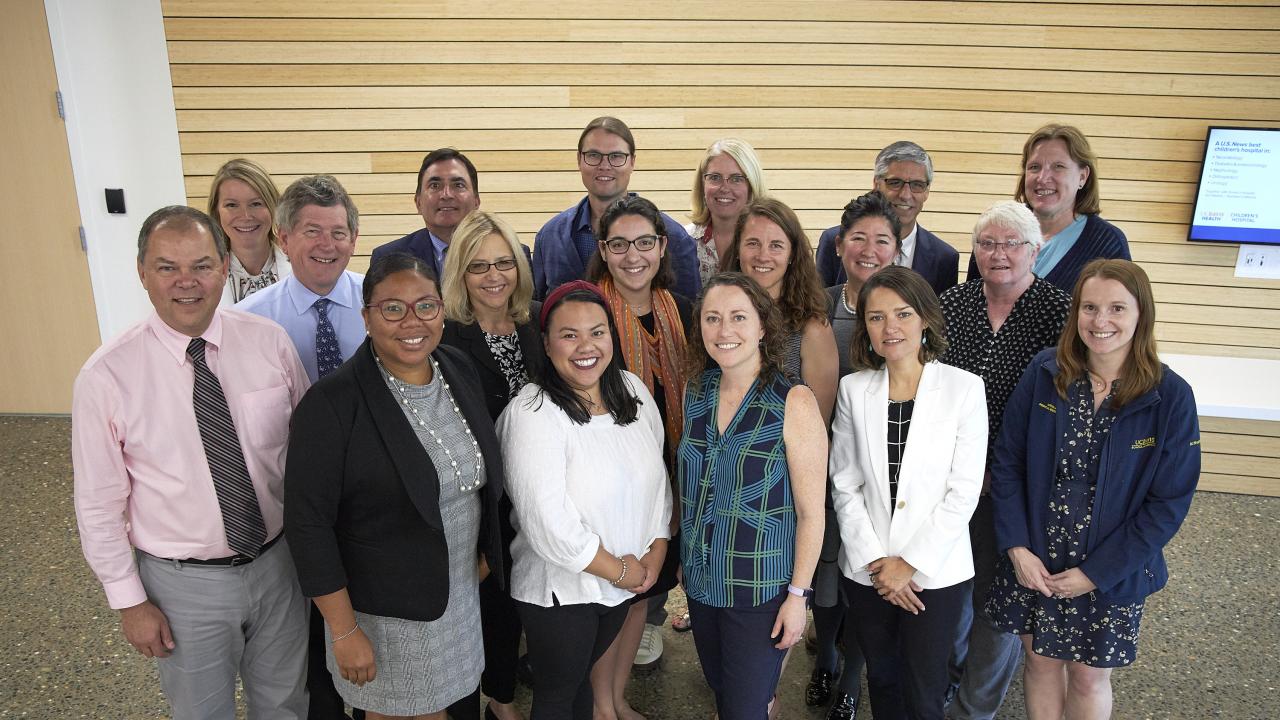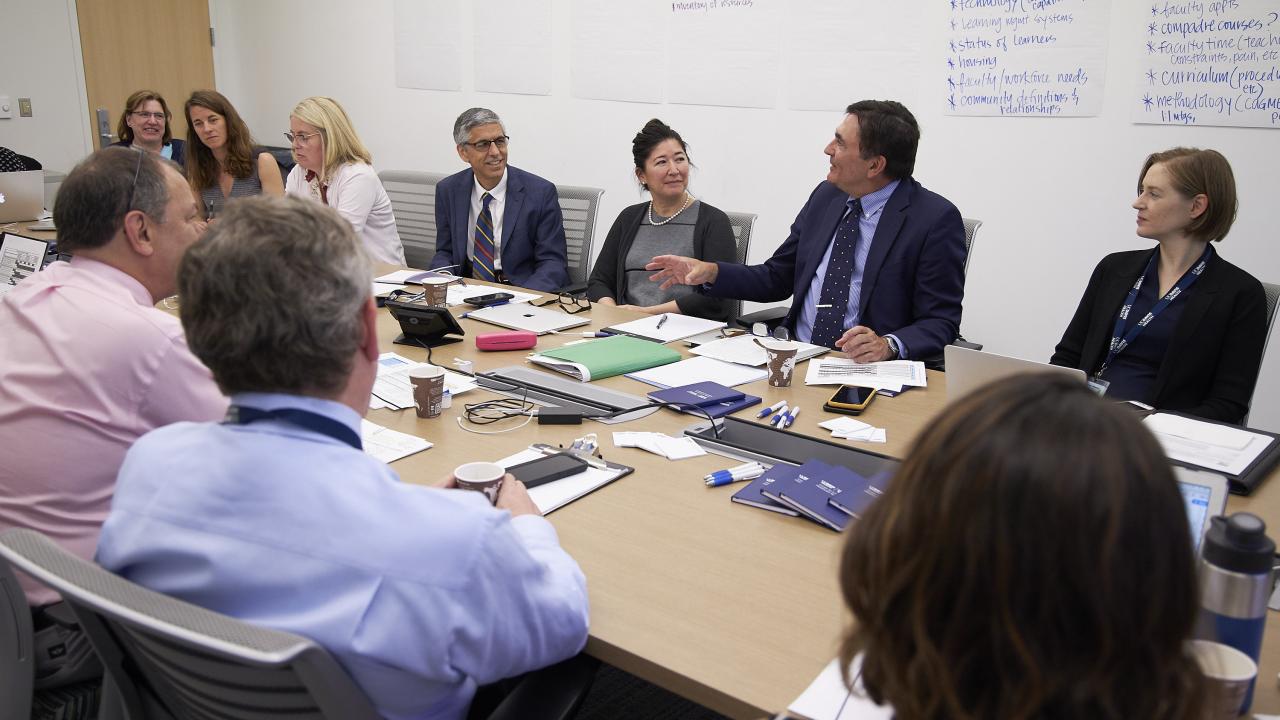
Collaborating across Communities
A partnership spans states in an effort to improve rural access to health care
America has long experienced a shortage of health care workers in rural areas, more recently exacerbated by the coronavirus pandemic. According to an April PBS News Hour feature examining some of the root cause of this shortage, rural hospitals often have lower patient volumes and are more reliant on Medicare and Medicaid, they have much smaller profit margins than urban hospitals — which can lead to closure, and few medical trainees currently come from rural communities
Luckily, collaborative partnerships designed to tackle complex challenges like these are nothing new for UC Davis.
In June 2019, UC Davis and Oregon Health & Science University (OHSU) received a prestigious five-year, $1.8 million grant from the American Medical Association to expand access to quality health care between Sacramento and Portland through a network of teaching hospitals and clinics in mostly rural areas — one of only eight projects awarded. The collaboration between the UC Davis School of Medicine and OHSU — California Oregon Medical Partnership to Address Disparities in Rural Education and Health, or COMPADRE — includes more than 30 graduate medical education (GME) programs across 10 health care systems throughout northern California and Oregon.
In an interview with KXTV Sacramento, Mark Henderson, associate dean for admission and outreach for the medical school, noted that students are more likely to practice medicine in or near the region they received training, underscoring the importance of this partnership. “Two universities from two different states working together on a border region is an important and unique element of the project that will allow us to make a difference in addressing problems that have lingered for a long time in each of our states,” he said.
Shortages lead to sickness
Around 20 percent of the U.S. population (roughly 50 million people) lives in rural areas, but just 11 percent of physicians practice in those communities. Amplifying the existing shortage, more than 110 rural hospitals have closed nationwide since 2010.
These conditions can have dire consequences. According to the Centers for Disease Control, rural Americans face numerous health disparities compared with their urban counterparts and are at greater risk for heart disease, unintentional injury, chronic lower respiratory disease, stroke and cancer. And those who have cancer are diagnosed at later stages of the disease, have less access to clinical trials, and spend 66 percent more time traveling to see cancer care providers than their urban counterparts.
The Sacramento-Portland corridor is not immune to these inequities. The roughly 579-mile region is dotted by towns and cities with populations in the low thousands and often less. The distance between towns increases the closer you get to the California–Oregon border and hospitals are scattered (or shuttered) forcing patients to travel far for treatment and when a matter of minutes means life or death, ambulances must race to distant, overburdened emergency rooms to try and save patients.
Dean Germano, CEO of the Shasta Community Health Center (part of COMPADRE) has seen firsthand how residents in rural Northern California and Southern Oregon communities often suffer from treatable and preventable health problems.
“Diabetes; lifestyle-related health care issues; drug and alcohol battles; mental health — rural areas have more difficult time getting that help,” Germano said. “They have a higher unemployment rate than the rest of state. Economic stressors lead to health stressors.”
Root causes of rural shortages
While there is no quick fix for the shortage of health care workers in rural communities, there are many root causes that can be addressed. For one, medical graduates tend to work near where they trained — which isn’t promising data for region with limited training opportunities for future physicians. But projects like COMPADRE can encourage more students who grow up in rural areas — often experiencing health care shortages firsthand — to pursue a medical degree and serve the communities they feel connected to.
Additionally, the high cost of tuition and significant amount of student loan debt pushes newly minted physicians to take higher paying jobs in more populated, urban areas.
“They’re graduating with a mortgage, essentially,” says Tonya Fancher, associate dean for workforce innovation and community engagement in the School of Medicine and co-principal investigator on the grant. “It’s no wonder why they’re not choosing to work in a place where they’ll be paid less.”
Physicians who work in rural areas often are stretched thin and lack support, only increasing their stress, adds Germano. “Providers here really feel that critical mass. You can feel that stress,” he said.
“We need a steady, reliable (pre-health) pipeline of students who will come back and serve our community so we can move away from disease management-oriented care to wellness management-oriented care.”
Expanding the pathways for future doctors
The goal of COMPADRE is to increase access to health care providers by addressing health care workforce shortages in rural, tribal, urban and other communities that lack resources, in turn improving the health of patients they serve.
In an effort to meet this goal, COMPADRE is aiming to place hundreds of medical students and resident physicians to train under faculty and community physicians at health care systems, hospitals and Federally Qualified Health Centers and Community Clinics throughout Northern California and Southern Oregon.
“We are looking at how we can create a nimbler system to ensure that we put good doctors in the right places and that they can do the kind of care that is needed there,” said Fancher. “To do this, I think will requires us to be a little more flexible in the way we train students.”

A critical first step toward creating a clear pathway for future physicians is to develop a robust program to inspire more high school students from rural and medically underserved communities to study medicine. The hope is these students will be more likely to practice health care in their home communities.
“During their years of medical school, we want to ensure they stay connected to the community. One way is to schedule a rotation in their home community,” Germano said. “I would like to see two or three students every year come through and end up in practice in our community.”
Those involved with the project say each partner brings a different, valued perspective to the effort. Germano says the partnership with universities helps endorse the program and attract bright young people in underserved communities to pursue it. The community health partners, in turn, help the two university partners align their curriculum and medical student rotations with the community's health care needs. Together, the partnership will design a matching process that ensures students will be successfully trained in underserved communities.
The work of COMPADRE matters because improving the health of people in northern California and southern Oregon is the bottom line, according to Fancher.
“I don’t think we measure success just by looking at each other,” Fancher said, “we should measure success by looking out the window.”
About UC Davis Public Scholarship and Engagement
Public Scholarship and Engagement (PSE) is building and supporting meaningful relationships between communities and UC Davis scholars that work together to solve today’s problems and tomorrow’s challenges.
We envision a university unbound that seeks to serve the public, equitably and inclusively, resulting in reciprocal and mutual benefit to California’s communities and beyond.
